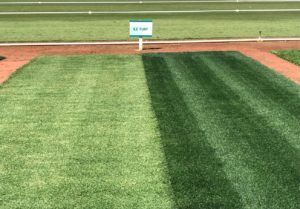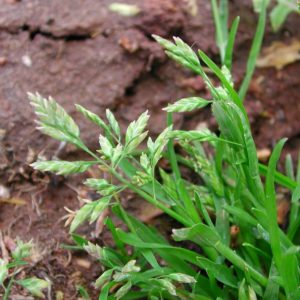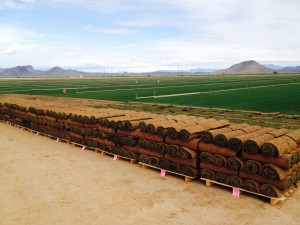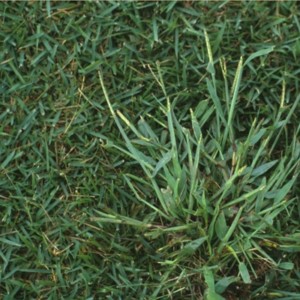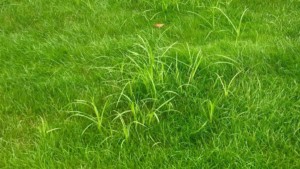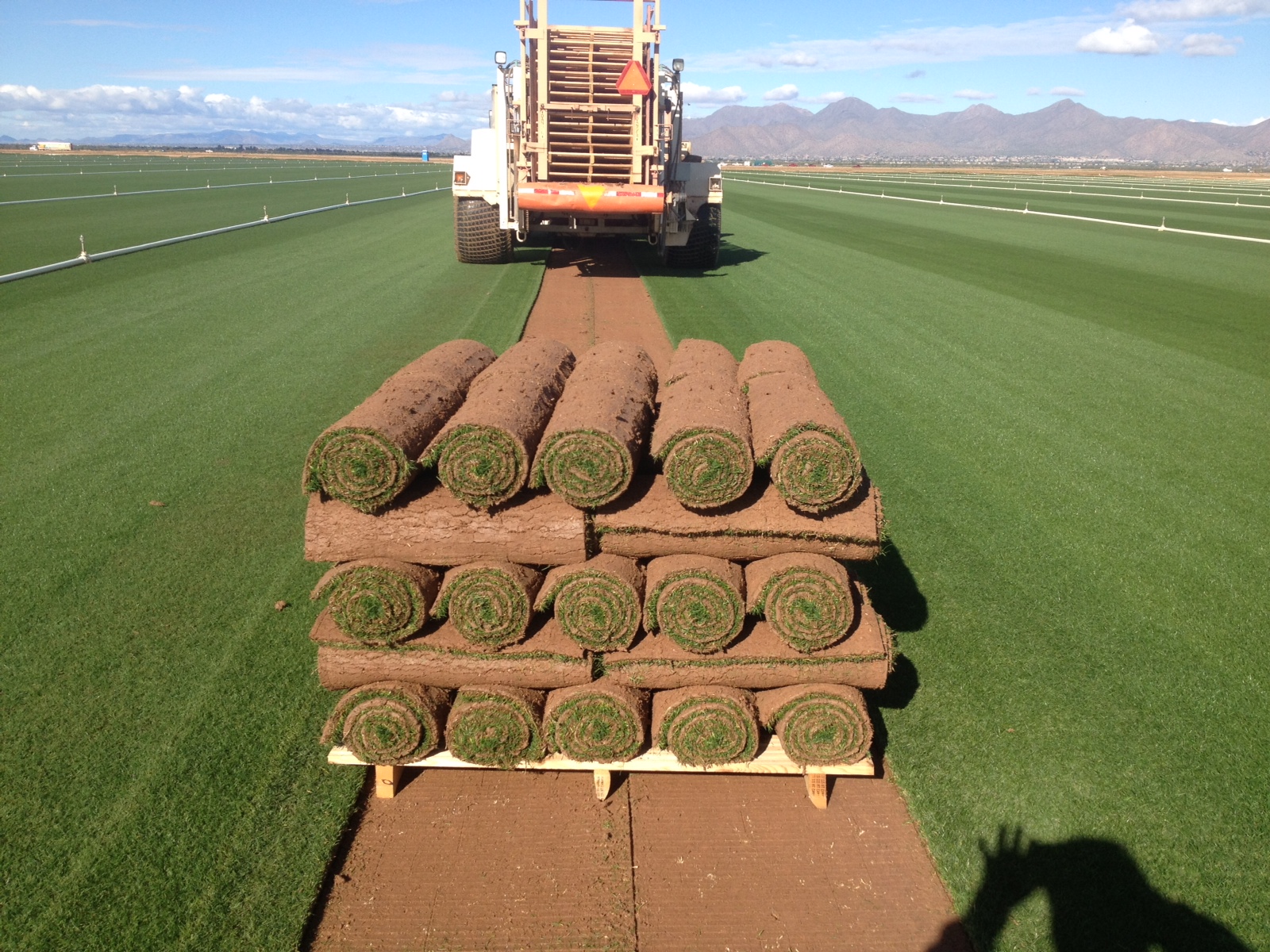Apr
Tips For Mowing Your California and Arizona Sod
Maintaining a lush, green lawn in the arid climates of Southern California and Arizona can be quite a challenge. It’s totally achievable though, with the right approach. Mowing plays a pivotal role in keeping your lawn healthy and attractive. Here are some tips on the best way to keep your lawn beautiful when mowing:
1. Choose the Right Mower: It is crucial to select the appropriate mower to achieve optimal results. For Southern California and Arizona, where lawns often consist of warm-season grasses like bermudagrass, Zoysia grass, or St. Augustine grass, consider using a rotary mower. These mowers are well-suited for cutting thicker grass types commonly found in warmer climates.
2. Adjust Mowing Height: Maintaining the correct mowing height is vital for the health of your lawn. In hot and dry climates, it’s recommended to keep your grass slightly taller to provide shade to the soil and retain moisture. Adjust your mower’s cutting height to leave the grass blades around 2 to 3 inches tall. Taller grass also helps to inhibit weed growth by shading the soil.
3. Follow the One-Third Rule: Adhere to the one-third rule that states
you should never remove more than one-third of the grass blade’s height in a single mowing session. Cutting more than this can stress the grass and make it more susceptible to drought and diseases. Aim to mow your lawn regularly to maintain a consistent height.
4. Mow When the Grass is Dry: Mowing wet grass can lead to an uneven cut and cause clumping, which can smother the grass beneath. Additionally, wet grass is more prone to tearing, resulting in an unhealthy appearance. Therefore, it’s best to mow your lawn when the grass is dry, preferably in the morning or late afternoon when temperatures are cooler.
5. Sharpen Mower Blades Regularly: Sharp mower blades ensure clean cuts, promoting healthier grass growth. Dull blades tear the grass instead of cutting it cleanly, leaving ragged edges that are more susceptible to disease. Check your mower blades regularly and sharpen or replace them as needed to maintain optimal cutting performance.
Alternate Mowing Patterns: Changing your mowing pattern regularly helps prevent soil compaction and encourages upright grass growth. Consider mowing in different directions each time you mow to avoid creating ruts and uneven wear on your lawn.
6. Leave Grass Clippings on the Lawn: Grass clippings are a valuable source of nutrients for your lawn. Instead of bagging them, leave them on the lawn to decompose. This practice, known as grasscycling, returns essential nutrients like nitrogen back into the soil, promoting healthy grass growth. For more information, visit westcoastturf.com
Comments Off on Tips For Mowing Your California and Arizona SodMar
When Should I Start to Spring Transition My Lawn to Bermudagrass?
I’d like to go over some common questions I have received through the blog in the last few weeks and see if it can help others with some of the same concerns. I always encourage everyone to send over your lawn questions and I will get back to you as soon as I can.
When should I start to transition my lawn back to bermudagrass?
I always recommend starting the process slowly in March and ramping up in April so your lawn has transitioned by May. I know that was a mouth full, but the truth is it’s not a short process unless you chemically transition your lawn. In March its ideal to start to gradually lower your mowing height and remove some of the turf canopy. This is not a scalp, this is lowering the height so the bermudagrass can breathe and get some sunlight. By mid-March you should be mowing two times per week and starting to see some thinning in the ryegrass. By thinning I mean bermudagrass leaves are starting to show between the ryegrass blades. Currently there is no need to fertilize the ryegrass, its time to back off on nutrition until bermudagrass season. In early April you can lightly verticut or even lightly power rake the lawn to remove some of the ryegrass giving way to bermudagrass. The more sunlight you can get in the grass, the faster you will transition. If the ryegrass remains extremely thick and lush you can expect it to provide excessive spring shade slowing down the bermudagrass. When soil temperatures reach 64 degrees (around April 15th) go ahead and apply ammonium sulfate 21-0-0 at 5 pounds per 1000 SF to jump start your bermudagrass. Continue mowing two times per week and gradually lowering your heights until you see the bermudagrass take over.
Spring Transition, keep lowering the height…..
Can I still put down pre-emergent for broadleaves?
Most of the grassy weeds and broadleaves are now germinating so putting down the preemergent will not yield the results you’re looking for. At this juncture its best to spot spray weeds depending on the type. Make sure the product is labeled for the weed you’re trying to control and can safely be used on bermudagrass. Grassy weeds use different chemicals than broadleaves and not all chemicals are safe and effective so check with specialty stores for better products.
What can I do to repair the urine damage from my dogs? Read the rest of this entry »
Comments Off on When Should I Start to Spring Transition My Lawn to Bermudagrass?Jan
Winter Lawn Care for your California and Arizona Sod
The weather stays relatively pleasant and sunny in desert landscapes in Southern California and Arizona, even in the winter. But once the suns dips down, temperatures drop down drastically. What can you do to keep your natural lawn looking beautiful in the colder months? Here are some tips.
Keep mowing!
Mowing your grass can sometimes fall by the wayside during the winter months. It’s recommended that you follow a semi-regular schedule and continue to mow the grass until you see the growth slow. A good rule of thumb is to keep your grass around 2 to 2.5 inches tall throughout the autumn months, since the grass could start to mat above 3 inches. It’s important to keep it the right length, since overgrowth can cause mold or diseases, and cutting it too short hinders the grass’s ability to to store food for growth.
Sustain Growth by Watering
Even though the temperatures are cooler and there is more precipitation this time of year, it’s still important to continue to water your natural grass. Following a consistent watering schedule encourages growth. Do make sure to adjust your automatic sprinklers so they don’t over-irrigate and cause fungal growth.
Don’t forget to weed in the winter!
Weeding may seem like more of a warm weather chore, but it’s just as important to keep up with it in the winter.
West Coast Turf is the expert on all things grass. Let us know what questions you have about keeping your natural turf looking amazing! Visit our website at www.westcoastturf.com.
Comments Off on Winter Lawn Care for your California and Arizona SodFeb
Annual Weed Control and Your Lawn
With the recent rise in temperatures and a little moisture you have likely seen some weeds pop up even if you had put down a pre-emergent in the fall. We have hit the end of the window where the fall application will control the weeds. It is now time to control the weeds that have snuck through your barrier and to put down a control for the summer annuals.
Let us start with controlling the weeds that have made their way through your turf. There are a couple different types of weeds to treat. Before we can give you chemicals to spray its important to recognize the type of grass you’re treating. I will put the recommendations down for a dormant turf lawn and one that has been overseeded with perennial ryegrass for the winter. If you did not overseed in the fall you will follow the dormant turf guidelines. My recommendations will be for bermudagrass so if you have paspalum or St. Augustine make sure you read the herbicide label prior to applying and follow the correct rate. These are usually different than bermudagrass.
Dormant Turf
If you let your Arizona and California lawn go dormant for the winter, it is starting to see a little life now with the warmer temperatures. You will not see any growth until the soil temperature reached 64 degrees which is usually in April, but your lawn will green up in color in March.
First step will be to clean up your lawn by mowing any debris and dead material off the top. This is not scalping the lawn, just get a good clean up. Next step will be to treat any broadleaves or grassy weeds that may have popped through your turf. For broadleaves you can apply 2,4-D and grassy weeds such as poa annua or volunteer ryegrass can typically be hand pulled, dabbed (not sprayed, think bingo dabber) with tiny amount of roundup or a product such as Revolver or Kerb. Because of its very shallow root system you should not have to use any products to kill it. It pulls out of the ground very easily and is usually caused by low areas and too much water.
Poa annua
Comments Off on Annual Weed Control and Your LawnFeb
Pre-Emergent Weed Control/Watering/Fertilizer
We are spending lots of time outside, and I know you all want to have your California and Arizona lawn looking its best! I’d like to talk about a few weeds that may be starting to appear in your lawn that are perennial problems. Let’s discuss getting down a pre-emergent herbicide on your lawn before all the spring and summer annuals start to show their faces. Weather obviously plays a key role in everything we do concerning turfgrass so it is important to get the timing right.
This has been a mild winter with little rain causing the ground temperature to stay slightly warmer than normal so we will have some early season weed issues. If you are in a cooler part of town and are still getting hit with the occasional frosts I would hold off until the first part of March. These cool areas can get the pre-emergent down as late as the middle of March, while areas such as Phoenix and Palm Desert should be putting one down between now and the end of the month.
Since most homeowners have an overseeded lawn for the winter I want to make it clear that there are two options on a herbicide bag. One is overseeded rates and the other is non-overseeded rates. If you would like to keep your ryegrass make sure that you follow the overseeded rate or it could take a turn for the worse rather quickly. Read the rest of this entry »
Comments Off on Pre-Emergent Weed Control/Watering/FertilizerMar
Spring is on the Horizon – Arizona & California Turf Prep Tips
- Keep an eye on the temperature. At the point that it gets warmer than 65º at night consistently, you know you are ready for your spring transition.
- At this point, you can start reducing your water usage to about 70% (or even 80%) of your normal usage. This is a process that helps support the bermudagrass or paspalum (as it begins to kill the ryegrass). Note: do not try to do any drastic methods for this, such as halting watering altogether or scalping your lawn. This not only kills the winter rye grass, but also the hibernating warm season grass.
- Now we want to allow more sunlight to reach your warm season grass. We can effectively do this by verticutting the grass, which will allow the grass to open up its canopy. That process then allows more sunlight to get to the warm season grass.
- Aeration is the next step and this process breaks up hard pockets of soil and increases water penetration as well as nutrient intake, among many other things that help the warm season grass.
- You will need to start lowering your mower settings while increasing your mowing intervals to twice weekly, making sure the height of the grass doesn’t exceed a half inch (or at the highest, ¾ inch). Bag your clippings when you’re done!
- Fertilize your warm season grass and increase your watering schedule. It should take about two weeks before you see the bermudagrass overtaking the ryegrass. Gradually, you’ll increase your watering to a typical summer watering schedule.
Jan
Weeds and Your Arizona and California Lawns.
We haven’t had a very wet winter but with the recent rains we’re going to start to see the emergence of some winter annual weeds. The good news is the weeds that are starting to emerge are easy to control.
There are some types such as annual bluegrass, crabgrass, and nutsedge that are a little more complicated but timing pre-emergent herbicide applications can save you a lot of headaches with weed control. In this blog I will go over various weeds and some ways to control them as well as discuss herbicide timing. Weed control management is a function of several different factors but some of the things you can do to keep your lawn healthy are maintain the proper mowing height, not overwatering, fertilize monthly, and aerate the turf when the soil becomes compacted. These items right here can be the difference between weeds slowly emerging in your lawn and taking over your lawn. A healthy lawn will push out weeds and keep them to a minimum. If you have very few weeds emerge during the year chemical applications are usually unnecessary and weeds can be pulled by hand as they appear.
Comments Off on Weeds and Your Arizona and California Lawns.Jan
Weed Control Tips for Your California and Arizona Lawn
2017 has started out nicely with some timely rainfalls to keep most of you from having to water your lawn. It has also helped us move closer to getting out of the drought we’ve been suffering from for the last few years. The winter storms are helping us replenish our water supplies but they’re also helping germinate all of those of those summer annual weeds in the soil. The good news is weeds are relatively easy to contain. There are some types such as annual bluegrass, crabgrass, and nutsedge that are a little more complicated but timing pre-emergent herbicide applications can save you a lot of headaches with weed control. In this blog I will go over various weeds and some ways to control them as well as discuss herbicide timing.
Weed control management is a function of several different factors but some of the things you can do to keep your lawn healthy are maintain the proper mowing height, don’t overwater your lawn, fertilize monthly, and aerate the turf when the soil becomes compacted. These items right here can be the difference between weeds slowly emerging in your lawn and taking over your lawn. A healthy lawn will push out weeds and keep them to a minimum. If you have very few weeds emerge during the year chemical application is unnecessary and weeds can be pulled by hand as they appear.
Comments Off on Weed Control Tips for Your California and Arizona Lawn
Aug
The Drought and Your Grass. How to Have a Lawn and Benefit the Environment.
Let’s face it–there is little one can do to escape the oppressive August heat in Arizona and California. But, did you know your property with grass is a good 30 degrees cooler than your neighbors’ with rocks, and 50 degrees cooler than the ones with artificial turf? Natural turfgrass has some major benefits!
I thought I would start off today’s blog by giving you some light at the end of the dark tunnel we call “summer.” While we started the summer off with mild temperatures, they have quickly soared making it one of the hottest summers on record. In order to combat the temperatures most people try to stay inside or crank up their air conditioners, but what we should be doing is looking for ways to control the ambient temperature at our properties. Installing grass is one of the best ways for lowering the temperature around your house, and allowing you to stay cool when you’re out enjoying a beverage by the pool.
I know a lot of people are reading that first paragraph and saying we’re experiencing a historic drought–how can we put in a new lawn? Yes, we are experiencing a drought, but the media would have you believe all the water being used is by lawns and golf courses. How about hotels, pools, washing cars, long showers, fountains, air conditioners, increase in electricity usage, washing dishes, and on and on? It’s easy to blame turfgrass for using too much water, but we need to look ourselves in the mirror each day and realize all need to act responsibly during this drought. Some see grass as a luxury, and golf as a silly game that is using our water supply. What they don’t see are the positive effects turfgrass has on the environment.
Comments Off on The Drought and Your Grass. How to Have a Lawn and Benefit the Environment.Feb
WEEDS! Pre-Emergent Herbicides and Your Lawn
Last week it was raining and in the low 60’s and this week we will be pushing the low 80’s. Everyone knows that the rain is great for our lawns but it is also great for producing weeds.
As we move through February it is important to think about your lawn from the previous year. Did you have weed issues? Were you constantly pulling spurge out of the lawn during the summer? Even if you didn’t have a bad case of this last year you should still think about putting down a pre-emergent herbicide. The window to apply these is from now until the end of February. If you miss the window and the seedlings have already germinated you can bet you will be on your hands and knees this summer pulling weeds out of your turf.
Comments Off on WEEDS! Pre-Emergent Herbicides and Your Lawn


